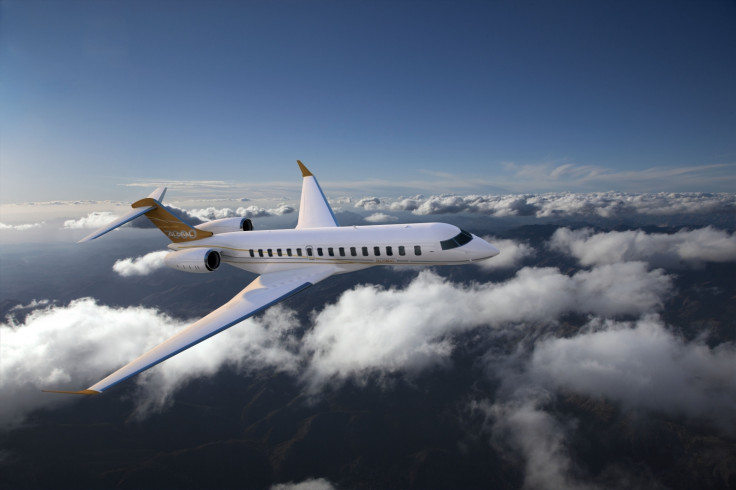Pilot experience: Is there a crisis looming in the industry?
A survey conducted by National Geographic for the new series of Air Crash Investigation found that only 12% of UK fliers are worried about inexperienced pilots when they fly.

The increase in disposable income and the expansion of the low-cost flight concept by independent airlines has provided a travel revolution for millions of people around the globe. The main aircraft manufacturers have ramped up production to deliver record numbers of airliners, over 1700 last year. Whilst some are replacement for older aircraft, many of these cascade to other areas of the world where maintenance is cheaper. The remainder get parked in "boneyards" in dry parts of the world or "parted-out" as they are broken apart for spare critical components and recycled for scrap.
As the number of in-service aircraft increases, so the total pilot pool needs to expand. A rough guide is six crews per jet for the narrow body aircraft and ten crews per jet for the wide body aircraft. Each crew consists of at least two pilots, a captain and a first officer. Long distance flights can carry another one or two pilots to ensure that each pilot has reasonable rest during the flight.
When a new aircraft is delivered, that implies that at least another 12 pilots are required. Assuming that there is some internal promotion from the current employees, six pilots will need to be promoted to captain status and the new cadets fill in the positions made vacant at the bottom as well as the expansion positions. A survey conducted by National Geographic for the new series of Air Crash Investigation found that only 12% of UK fliers are worried about inexperienced pilots when they fly.
The pool of available trained pilots can come from ex-military pilots. However, as military operations are cut back with the financial squeeze on government budgets, so the number of retiring military pilots reduces. There are no long-term wars leading to recruit, train, deploy and retire to civilian life as happened after the Vietnam war to feed the expansion in the United States last century. Former officers need retraining so that they accept the challenges to their decisions and actions made by new civilian pilots unused to bowing to authority in a very deferential manner. Teamwork is critical in a two-crew operation.
As a legislative response to an accident in 2009, the requirements for pilot experience in the United States were increased before becoming eligible for an Airline Transport Pilot certificate to fly a regional airliner. The pilot's certificate requirements in the United States at 1500 hours of experience now contrast sharply with the European requirements which can be under 100 hours. Even with this low level of training compared to the United States, three quarters (75%) of UK residents feel completely safe with the pilot's ability when flying. This lower experience requirement in Europe is based on extensive simulator training tailored towards a career flying modern commercial airliners. The building of experience in the United States can be achieved through becoming a flying instructor and spending around three years flying small aircraft around the local area. This is still having an effect on the pilot supply chain. One regional airline on the West coast of the USA had to cancel hundreds of flights from its summer timetable in 2017 because of a lack of pilots.
The link between pilot experience and flight safety is not a direct correlation. Well designed and thorough training is key for both new pilots and promotion to captain. The video game generation of young pilots can struggle with some elements of awareness that previous generations did not. It is up to the designers of training programmes to identify how to deal with this. Older pilots may have more difficulty adjusting to the modern electronic cockpits but as this technology becomes more widespread then this issue is beginning to die out.
The cost of pilot training should not be underestimated. If the "Bank of Dad" can produce £100,000 then this should get you to an airline position, subject to flying aptitude and psychological profile. Some airlines even charge their co-pilots to fly with them as a form of extreme internship. Some airlines offer sponsorship now as a way into the industry but this will come with several years of tied contract at relatively low wages to pay off their investment. Whilst there may be nothing wrong financially with this model, both parties benefit from the contract, there are worrying issues for the mental health of the pilots. The low wages combined with difficult shift patterns make it difficult to get adequate rest and relaxation time. Living as a young pilot close to the airports in London is not cheap and it usually means renting a room in a shared house. The social isolation of being alone with just an iPad and the lack of contact with passengers because of security concerns in flight can take its toll on mental health.
Training can be a great substitute for experience, provided that it is well thought out and comprehensive. As aircraft systems become more reliable then a pilot will experience fewer problems throughout a career. A new pilot may never experience an engine failure in their career. I had three engine failures in training and vintage aircraft before I was 21. The ability of simulators to create realistic scenarios is amazing. However, the training programme needs to have the imagination to predict what will be the pilot needs. This is the way ahead and embraced by many advanced airlines.
Assuming that the training is in place, how can the shortage of pilots be addressed? The Chinese airlines are offering very high wages to tempt pilots from the western countries. Making the profession more attractive to females will boost the potential recruitment pool. Enabling access to adequate financial support is a key to the self-motivated. The university system has offered courses combining degrees and practical flying training which has to be applauded. The talent pool is there but it is time for the industry to respond so that the predicted looming pilot shortages do not affect the safety of operations or the commercial demand.
National Geographic is airing brand new episodes of Air Crash Investigation every Thursday at 9pm.





















